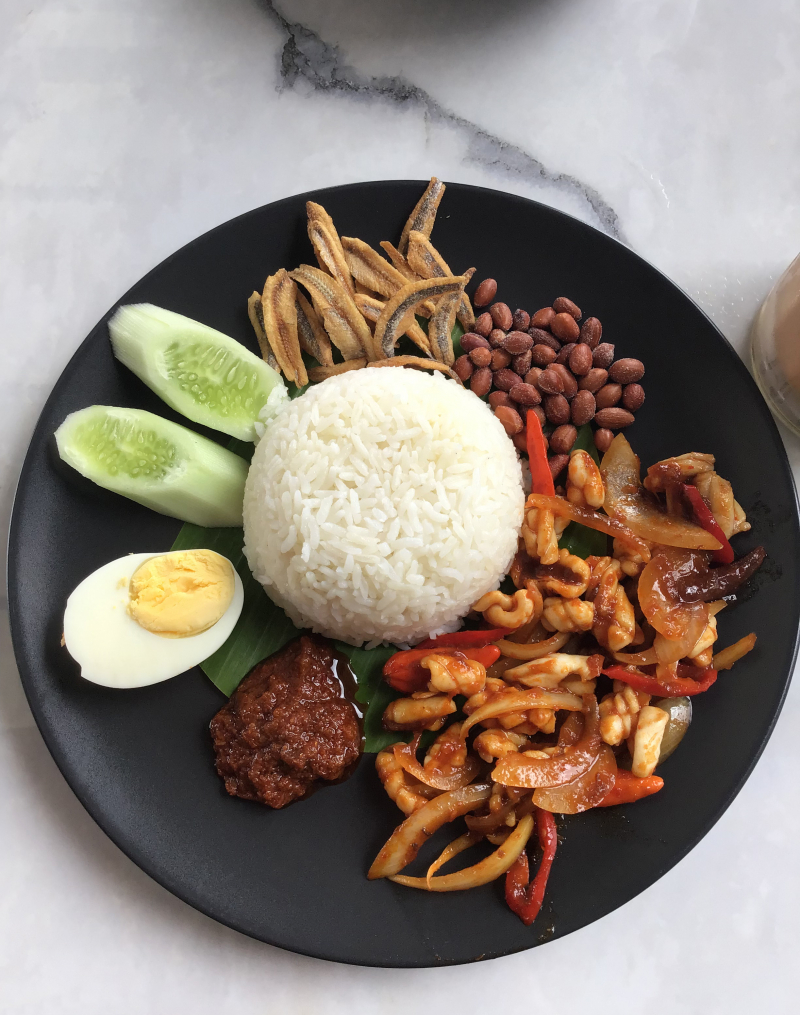Nasi Lemak
At the pinnacle of Malaysian street food, Nasi Lemak reigns supreme. It's a dish that carries the weight of tradition and the heartbeats of generations.
Originally a farmer's meal, it provided the necessary sustenance for a long day in the fields. Its historical background paints a picture of hardworking Malaysians deriving energy from this dish. "Rich rice", as the name translates, perfectly captures the dish's essence. The rice, steamed in creamy coconut milk, forms the foundation. What started as a simple meal has now embraced a variety of ingredients.
The dish's primary cultural influence is Malay, with a slight hint of Indian and Chinese culinary traditions. These influences enrich the taste and showcase the melting pot that is Malaysian culture.
Diving into its flavor profile, one is met with a symphony of tastes. The main flavor is the rich and creamy coconut milk-infused rice. It's juxtaposed with the spicy sambal, a type of chili paste, which adds a fiery kick. Crunchy anchovies, roasted peanuts, and a hard-boiled or fried egg often accompany these main components. Sometimes, a slice of cooling cucumber offsets the dish's spiciness.
Yet, every Nasi Lemak can have its unique character. The core ingredients remain consistent: rice, sambal, anchovies, peanuts, and egg. But chefs and street vendors introduce their flair. Some bring in the robustness of rendang or the savory notes of spiced fried chicken.
Traditionally, Nasi Lemak was a breakfast dish. Wrapped in a banana leaf, it was easy to carry to the fields or to work. Today, it's transitioned into an anytime meal. Be it dawn or dusk; it finds its place in the Malaysian culinary scene.
Key Takeaways:
- Origin: Born in Malay kitchens, with a sprinkle of Indian and Chinese influences.
- Flavor Profile: A dance of creamy, spicy, salty, and crunchy elements.
- Main Ingredients: Coconut milk-infused rice, sambal, anchovies, peanuts, and egg.
- Serving Occasion: From breakfasts of yesteryears to today's all-day delight.











